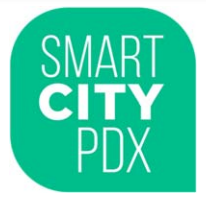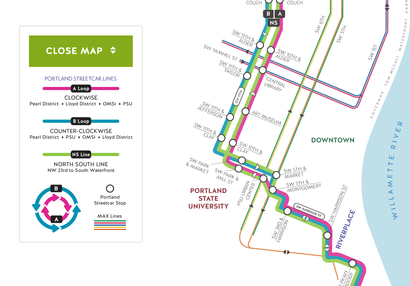
This project will deploy the Multi Modal Intelligent Traffic Signal System (MMITSS) — a Dynamic Mobility Application, developed at the University of Arizona through a Connected Vehicle Pooled Fund Project — on the Portland Streetcar and at four intersections along the “Art Museum Corridor” in Southwest Portland. Through this deployment, the project will create a foundation (experience, understanding) for deploying connected vehicle infrastructure in the city and facilitating connected vehicle research in the NITC UTC.
Potential Benefits to Streetcar & City:
Streetcar has established goals around system performance
(1) 85% on‐time performance
(2) Less than .65 collisions per 1000 hours of service
(3) Goal of this project: evaluate if a more extensive deployment of this technology could help improve streetcar system performance
Project is intended to lay a foundation for CV deployment and research in Portland.
Potential future work:
(1) Expanded deployments within the Portland region – streetcar or light rail
(2) Identification of multimodal CV application opportunities including pedestrians and bicyclists
(3) Research in integration of bicycles and pedestrians into the CV environment
(4) Development of (additional) visual analytics and data processing paradigms for CV data.
Planned Project Outcomes:
(1) CV Infrastructure Deployment: Deployment of the MMITSS CV infrastructure on the PortlandStreetcar and at City of Portland signalized intersections.
(2) CV Data Collection and Analytics: Automated collection and storage of CV data in the PORTALdata archive. Design and development of select visual analytics in PORTAL using CV data, i.e.assessing Streetcar performance with and without CV / MMITSS technology.
(3) Deployment Guidance: A technology deployment strategy and lessons learned for thedeployment of advanced traffic signal control in a CV environment for use by other researchersand public agencies.
(4) Management Policy: A management policy to allow the operating agency to determine whichmodes of travel should be given higher priority. For example, during commute times, buses,light rail, and bicycles may be given higher priority than passenger vehicles.
(5) Foundation for Future Work: The project will be designed to support the addition of smartphonecapabilities for pedestrians and bicycles and the capture of high-fidelity data from connectedtravelers (pedestrians, bicycles, passenger vehicles, transit, trucks, and emergency vehicles).
